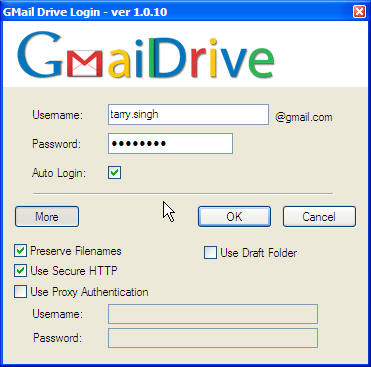Ok all the talk about GFS (Google File System) and the leaked stuff around it. Anyways these guys have released a GMailDrive.
Check it out.
So what is GMail Drive?
GMail Drive creates a virtual filesystem on top of your Google Gmail account and enables you to save and retrieve files stored on your Gmail account directly from inside Windows Explorer. GMail Drive literally adds a new drive to your computer under the My Computer folder, where you can create new folders, copy and drag'n'drop files to.
...says the creator of GMail Drive.
Use it with caution. Its still in its beta phase but cool to play around with the added disk space! No doubt about that. There is also another cool tool PPoperti which does the same.
Eventually you'll have GMail which will have the P2P concept which Pando uses (among others)
After installing it looks like this...

Login

Comments
Post a Comment